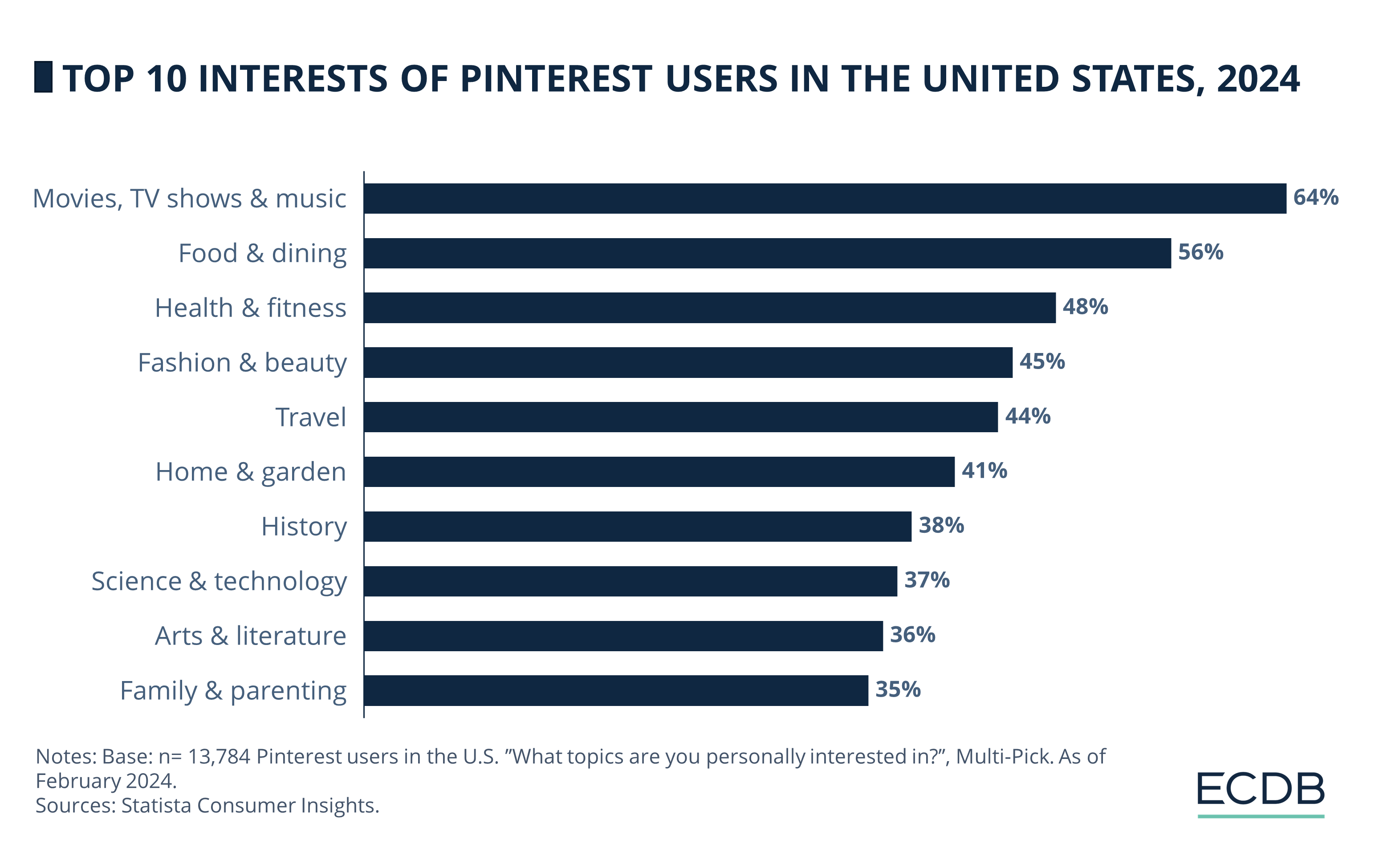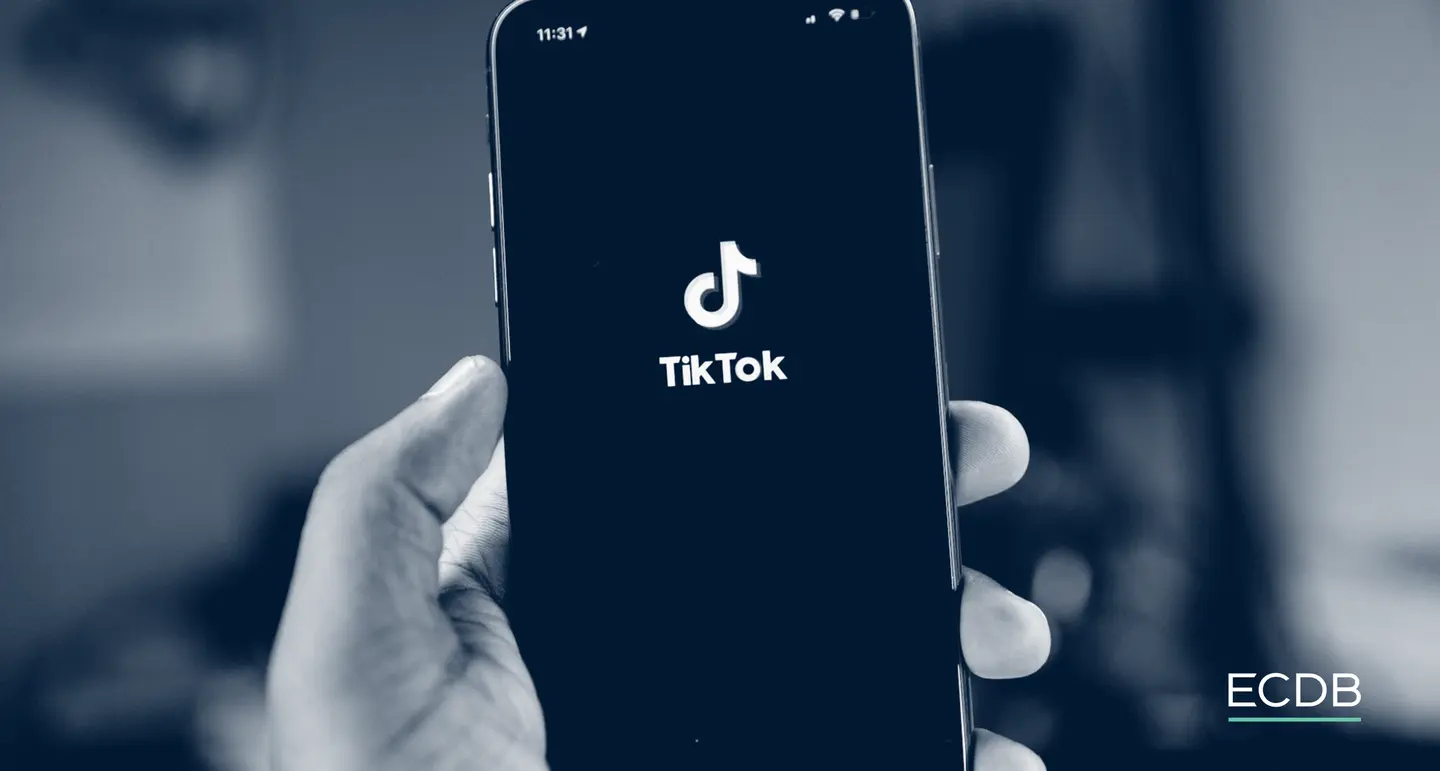eCommerce: Pinterest Business Model
Pinterest Shopping: From Inspiration Platform to eCommerce Player
Originally a platform for creating image collections, Pinterest is now shifting gears to become more prevalent in eCommerce. How exactly is it doing that? Here is the strategy of Pinterest Shopping.
August 22, 2024Download
Coming soon
Share

Pinterest Shopping eCommerce: Key Insights
Financial and Engagement Growth: Pinterest continued to grow in Q2 2024, with a 21% increase in revenue and a 12% rise in Global Monthly Active Users, driven by improved shoppability and advertising.
Improved eCommerce Features: New shopping features on Pinterest led to the increase in engagement on shoppable pins. Advanced AI and strategic investments boosted user engagement and advertiser performance.
Verified Merchant Benefits: Joining Pinterest's Verified Merchant Program helps brands boost sales, offering benefits such as creating product pins, accessing a shop tab on profiles, and utilizing advanced conversion tracking, while partnerships with Shopify and other eCommerce platforms make adding products as pins easier.
In recent years, Pinterest has evolved from a platform for image inspiration into a social commerce site. With significant growth in users and revenue, Pinterest's strategic initiatives and partnerships have positioned it as a player to watch in eCommerce.
But how has Pinterest managed to realize this transformation and what strategies is it using to solidify its position as a leading player in eCommerce?
In light of the most recent Q2 2024 earnings report, there is a lot to look at. Let's get into it.
Pinterest eCommerce Strategy: Financial Growth and User Engagement
According to its latest quarterly release, Pinterest’s year-over-year revenue jumped by 21% to hit US$854 million in Q2 2024. Moreover, the platform also saw a 12% increase in Global Monthly Active Users (MAUs), reaching a record high of 522 million.
The revenue per user is up 8%, but average revenue is heavily skewed towards North America, with US$6.85 sales per user in the U.S. and Canada. In Europe, sales per user was lower, at US$1.03.
CEO Bill Ready credits the growth to the platform's shoppability, improved content relevance, and its advertising business. Indeed, Pinterest is increasingly putting more emphasis on realizing the commercial potential of the platform, particularly when it comes to facilitating online retail.
Stay Informed: Our rankings are continuously updated with the newest data from our models, offering valuable insights to enhance your business strategy. Curious about which stores and companies are at the forefront of eCommerce? Want to know which categories are leading in sales and popularity? Discover the answers in our rankings for companies, stores, and marketplaces. Keep ahead of the competition with ECDB.
Enhancing Shoppability and User Experience
Pinterest has solidified its role as a standout platform in the social commerce space. It's particularly praised for its frictionless, soft-sell approach to eCommerce, allowing users to explore and discover products in a non-intrusive manner.
The platform's shopping features have been designed to enhance this seamless shopping experience. Notable features include "Shop in Search," where product pins automatically pop up in related searches, and "Shop with Lens," allowing users to snap a photo of an item and find similar products on Pinterest. These innovations are part of why Pinterest has become a leader in visual discovery and shopping.

New Features Enchance the
Shopping Experience
In the Q1 2024 earnings call, CEO Ready stated that the engagement on shoppable pins has increased by more than 30%, while attributed checkout for merchants who have uploaded their catalogs on Pinterest has also jumped by 30% year-over-year.
New features like shoppable video pins and visual shopping modules such as Shop the Look have been integrated, enhancing the shopping experience on Pinterest. The guided shopping modules help users pick up where they left off on prior shopping journeys, resurfacing product pins based on past browsing and click history.
Furthermore, the introduction of Direct Links and the API for Conversions has significantly improved the actionability of pins, making it easier for users to shop directly from the platform. The Direct Links feature, which now covers 97% of lower funnel revenue, takes users to an advertiser's product or purchase page in just one click, significantly reducing friction and improving the ability to take action.

As per Statista data, top interest of Pinterest users in the U.S. is Movies, TV shows & music with 64% of survey respondents agreeing. Food & dining is also quite popular with 56%.
Strategic Investments and Future Directions
Pinterest is also leveraging advanced AI to improve relevance and personalization, contributing to increased user engagement. The platform has adopted next-gen AI technologies to drive further gains in relevancy and personalization, optimizing for depth of engagement and satisfaction of intent.
Dynamic creative optimization, which uses generative AI to optimize ad creatives, and ROAS (Return on Ad Spend) bidding, which automatically optimizes campaigns in real-time to prioritize users or products that drive the highest ROI (Return on Investment), are among the new tools rolled out to enhance advertiser performance.

The potential U.S. ban of social media platform TikTok could have a significant impact on the country's social commerce market, where platforms such as Pinterest could see increased investment in their eCommerce capabilities as they seek to attract TikTok's user base.
Among the top social commerce platforms in the U.S., Pinterest stands out with a 23% shopping usage rate, contrasting with lower engagement in Sweden, Czechia, and Finland. The platform's focus on a positive, personalized, and inspirational user environment has contributed to its success in the social commerce domain.
The ability to stay drama and controversy-free, coupled with its targeted approach to monetization, has made it a preferred choice for both users and advertisers looking for a brand-safe environment.
How to Boost Sales on Pinterest
For brands and marketers aiming to leverage Pinterest for social commerce, there are several key steps to maximize sales and engagement:
Join the Verified Merchant Program: Start by joining Pinterest's Verified Merchant Program. This program allows businesses to create product pins, get a shop tab on their profile, and access advanced conversion tracking analytics. Verification increases credibility, making it easier to turn browsers into buyers.
Optimize Your Catalogs: Organize your products into Pinterest catalogs. Ensure each product has detailed descriptions, high-quality images, and relevant keywords. Using Pinterest's partnership with Shopify, you can easily sync your product catalogs, making the process straightforward and efficient.
Leverage Rich Pins and Buyable Pins: Use Rich Pins to automatically update product information like pricing and availability directly from your website. Buyable Pins allow users to purchase products without leaving Pinterest, streamlining the shopping experience and boosting sales.
Invest in Ad Campaigns: Utilize Pinterest's advertising options, including Shopping Ads, Collection Ads, and Dynamic Retargeting, to increase visibility and conversions. Experiment with different ad formats to see what resonates best with your audience.
Enhance Visual Content: Create visually appealing pins that stand out. High-quality images and videos, minimal editing, and clear descriptions are crucial. Incorporate keywords and hashtags to improve SEO and make your content more discoverable.
Engage with Trends and Analytics: Stay on top of Pinterest trends and use analytics to refine your strategy. Understanding what your audience is searching for and engaging with will help you tailor your content to meet their needs and increase engagement.
By implementing these strategies, brands can effectively boost their sales on Pinterest, leveraging the platform's unique features to create a seamless and engaging shopping experience for users.
Pinterest Shopping: Closing Thoughts
Pinterest's lower funnel solutions, including shopping ads, mobile deep linking, and the API for Conversions, are driving meaningful and sustained ROI improvement for advertisers. The company's partnership with Google Ads Manager to introduce third-party demand in unmonetized international markets is also contributing to revenue growth.
This initiative, along with the resellers program aimed at bringing in local ad demand, highlights Pinterest's strategy to expand its global footprint and fill gaps in its auction with relevant ad content. As the platform becomes more of an online shopping platform, we are excited to see what changes it will implement to make a name for itself in the competitive eCommerce world.
Sources: Plann, Ecwid, Ecommerce CEO, Stine Andersson, Salesforce, Shopify, Pinterest, ECDB
FAQ: Pinterest eCommerce Strategy
Does Pinterest have eCommerce?
Yes, Pinterest has evolved into a social commerce platform with a strong focus on eCommerce. The platform has introduced various shopping features, such as shoppable pins, Shop in Search, and Shop with Lens, to enhance the user shopping experience.
What sells fast on Pinterest?
On Pinterest, products related to fashion, home decor, beauty, and DIY projects tend to sell quickly due to the platform's visual and inspirational nature. Additionally, categories like Movies, TV shows & music and Food & dining are highly popular among users, driving engagement and sales in these areas. High-quality visuals, trend-driven items, and products that align with Pinterest users' interests generally perform well and sell faster on the platform.
What do most people buy from Pinterest?
Most people on Pinterest tend to buy items related to fashion, home decor, beauty products, and DIY crafts. These categories align well with the platform's focus on visual inspiration and creativity. Additionally, food and dining products are also popular, given the high level of interest in recipes and cooking on the platform. These types of products resonate with Pinterest's audience, making them some of the most commonly purchased items.
What is the most popular category on Pinterest?
The most popular category on Pinterest is Movies, TV shows & music, with 64% of U.S. users showing interest in this category according to survey data. This category attracts the most engagement from Pinterest users.
Is Pinterest still relevant in 2024?
Yes, Pinterest remains relevant in 2024. The platform has experienced significant growth, with a 21% year-over-year revenue increase in Q2 2024, reaching US$854 million. Additionally, Pinterest saw a 12% rise in Global Monthly Active Users, hitting a record high of 522 million. Its evolving eCommerce strategy, new shopping features, and focus on user engagement continue to make it a key player in the social commerce space.

Click here for
more relevant insights from
our partner Mastercard.
Related insights
Deep Dive
YouTube Partners With Flipkart and Myntra to Launch YouTube Shopping in India
YouTube Partners With Flipkart and Myntra to Launch YouTube Shopping in India
Deep Dive
Kaspi to Acquire Stake in Hepsiburada, Expanding Presence in Turkey
Kaspi to Acquire Stake in Hepsiburada, Expanding Presence in Turkey
Deep Dive
Jumia Business Analysis: Top Markets, Revenue, GMV & eCommerce in Africa
Jumia Business Analysis: Top Markets, Revenue, GMV & eCommerce in Africa
Deep Dive
Temu Is the Second Most Visited eCommerce Website in the World
Temu Is the Second Most Visited eCommerce Website in the World
Deep Dive
Indonesia Urges Apple and Google To Restrict Temu
Indonesia Urges Apple and Google To Restrict Temu
Back to main topics